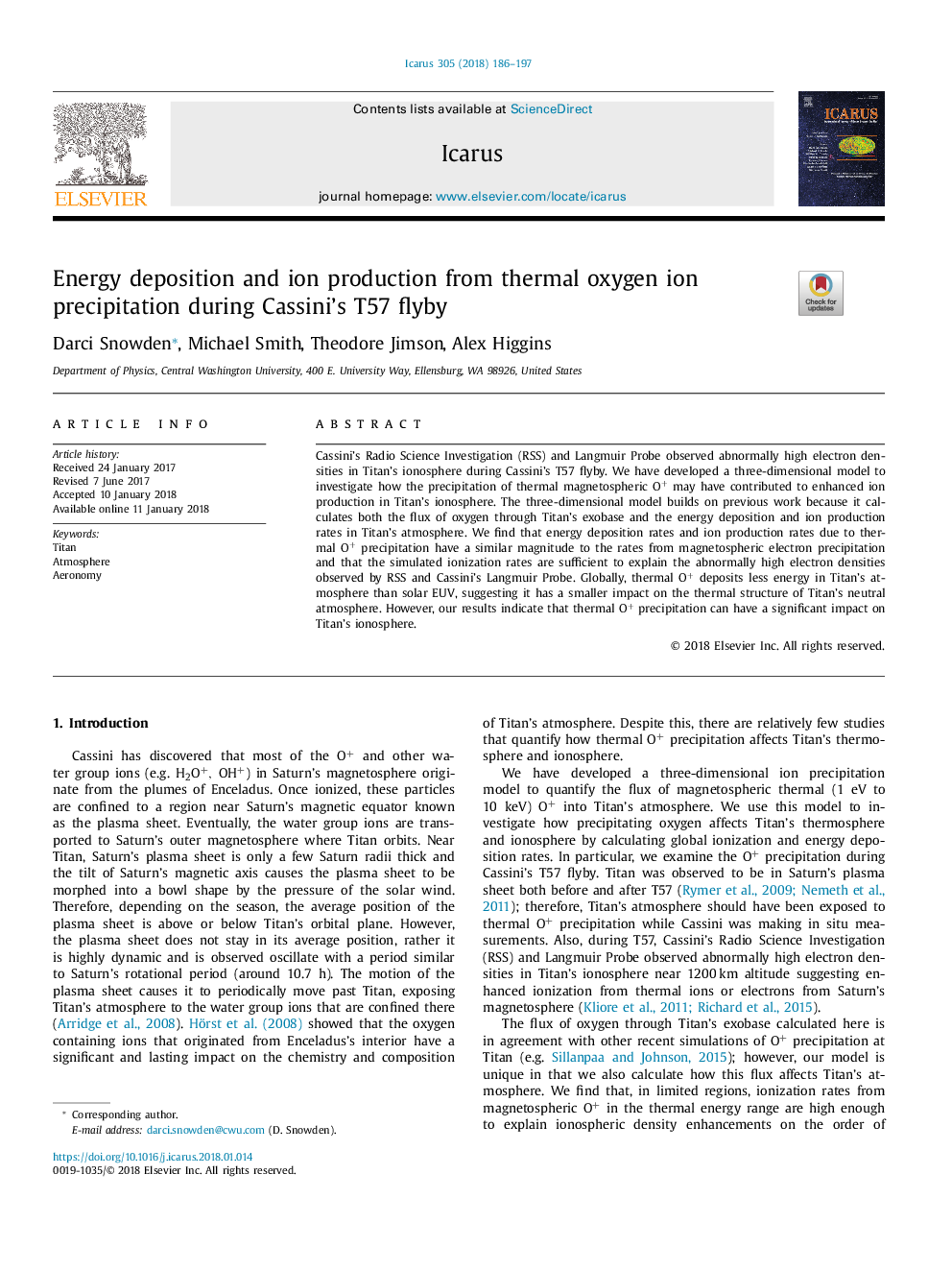| Article ID | Journal | Published Year | Pages | File Type |
|---|---|---|---|---|
| 8134331 | Icarus | 2018 | 12 Pages |
Abstract
Cassini's Radio Science Investigation (RSS) and Langmuir Probe observed abnormally high electron densities in Titan's ionosphere during Cassini's T57 flyby. We have developed a three-dimensional model to investigate how the precipitation of thermal magnetospheric O+ may have contributed to enhanced ion production in Titan's ionosphere. The three-dimensional model builds on previous work because it calculates both the flux of oxygen through Titan's exobase and the energy deposition and ion production rates in Titan's atmosphere. We find that energy deposition rates and ion production rates due to thermal O+ precipitation have a similar magnitude to the rates from magnetospheric electron precipitation and that the simulated ionization rates are sufficient to explain the abnormally high electron densities observed by RSS and Cassini's Langmuir Probe. Globally, thermal O+ deposits less energy in Titan's atmosphere than solar EUV, suggesting it has a smaller impact on the thermal structure of Titan's neutral atmosphere. However, our results indicate that thermal O+ precipitation can have a significant impact on Titan's ionosphere.
Keywords
Related Topics
Physical Sciences and Engineering
Earth and Planetary Sciences
Space and Planetary Science
Authors
Darci Snowden, Michael Smith, Theodore Jimson, Alex Higgins,
